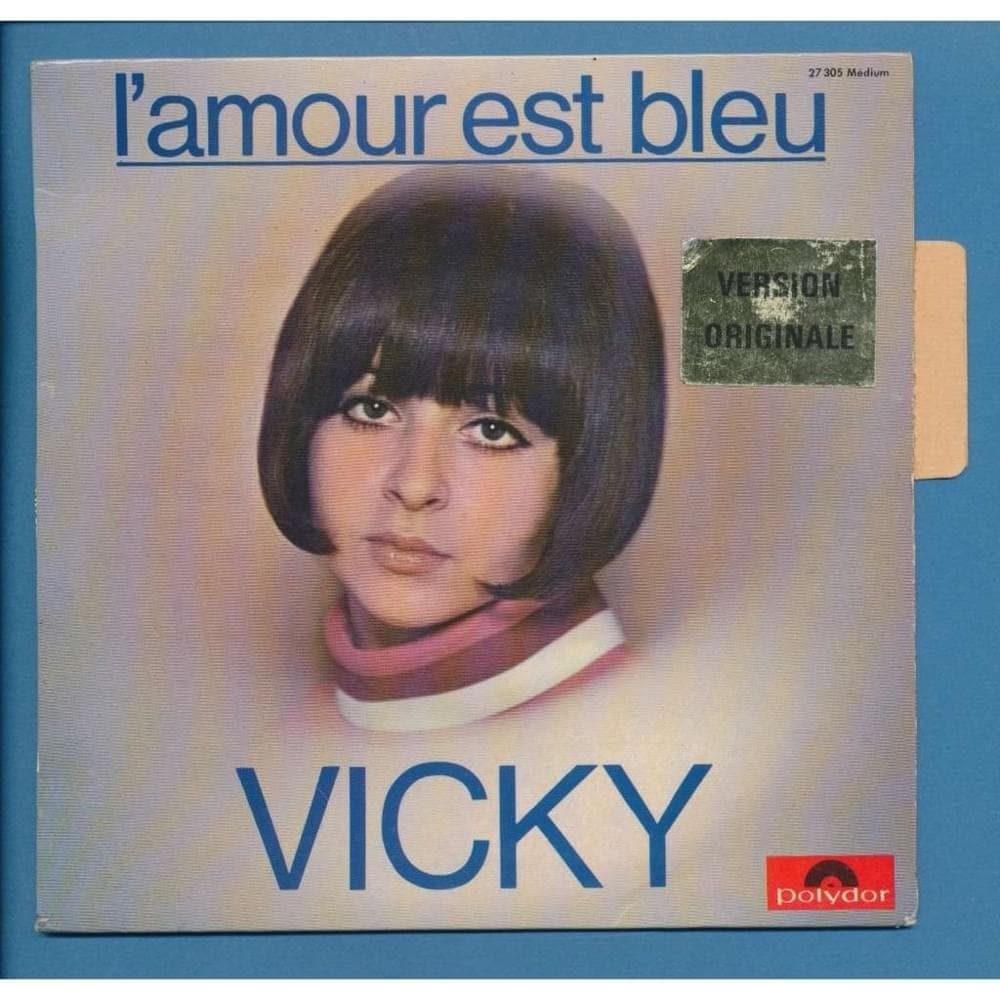
“L’amour est bleu”: A Symphony of Love and Longing
Few songs evoke the bittersweet essence of love as powerfully as “L’amour est bleu” (Love is Blue), made unforgettable by the enchanting voice of Vicky Leandros. Originally composed by André Popp with lyrics by Pierre Cour, the song began its journey as Luxembourg’s entry in the 1967 Eurovision Song Contest. While it only secured fourth place in the competition, its haunting melody and poetic lyrics transcended the contest stage, becoming a timeless anthem of romantic yearning.
When Vicky Leandros recorded her rendition, the song took on an even more poignant and intimate tone. Her voice, delicate yet deeply emotive, breathes life into the lyrics, transforming them into a heartfelt ode to love’s beauty and fragility. The arrangement in her version is lush and orchestral, underscoring the song’s wistful narrative with a sense of grandeur.
The lyrics of “L’amour est bleu” are a poetic tapestry of colors symbolizing the spectrum of love’s emotions. Blue is the color of tenderness and the infinite expanse of a lover’s gaze; grey signifies the tears of separation; red burns with the passion of desire. These vivid metaphors create an emotional palette that resonates universally, making the song a favorite for lovers and dreamers alike.
Vicky Leandros’ interpretation, released in multiple languages to reach a global audience, ensured the song’s enduring popularity. Her elegant phrasing and nuanced delivery make every word a brushstroke in a masterpiece of longing. It is as though her voice captures not just the melody but the very essence of love itself—beautiful, complex, and fleeting.
The song’s melody, with its sweeping violins and gentle harpsichord accents, evokes an almost cinematic quality. It’s music that feels like it belongs to another world, one where time slows, and emotions are magnified. In this way, “L’amour est bleu” transcends the boundaries of language and culture, speaking directly to the heart.
Though originally popularized by Paul Mauriat’s instrumental version, which became a chart-topping hit in the United States in 1968, Leandros’ vocal interpretation remains the definitive version for many fans. It’s a performance that marries the technical brilliance of a world-class artist with the vulnerability of a lover pouring their soul into song.
Decades after its release, “L’amour est bleu” remains a shining example of the power of music to capture the essence of human emotion. It is a song that doesn’t just speak of love but embodies it, with all its beauty, sorrow, and hope. Vicky Leandros brought to it a voice of timeless grace, ensuring that its melody would linger in the hearts of listeners for generations.
To hear “L’amour est bleu” is to step into a world of pure emotion, where love blooms and fades in a symphony of color. It’s more than a song—it’s a testament to the enduring magic of music and its ability to touch the soul.